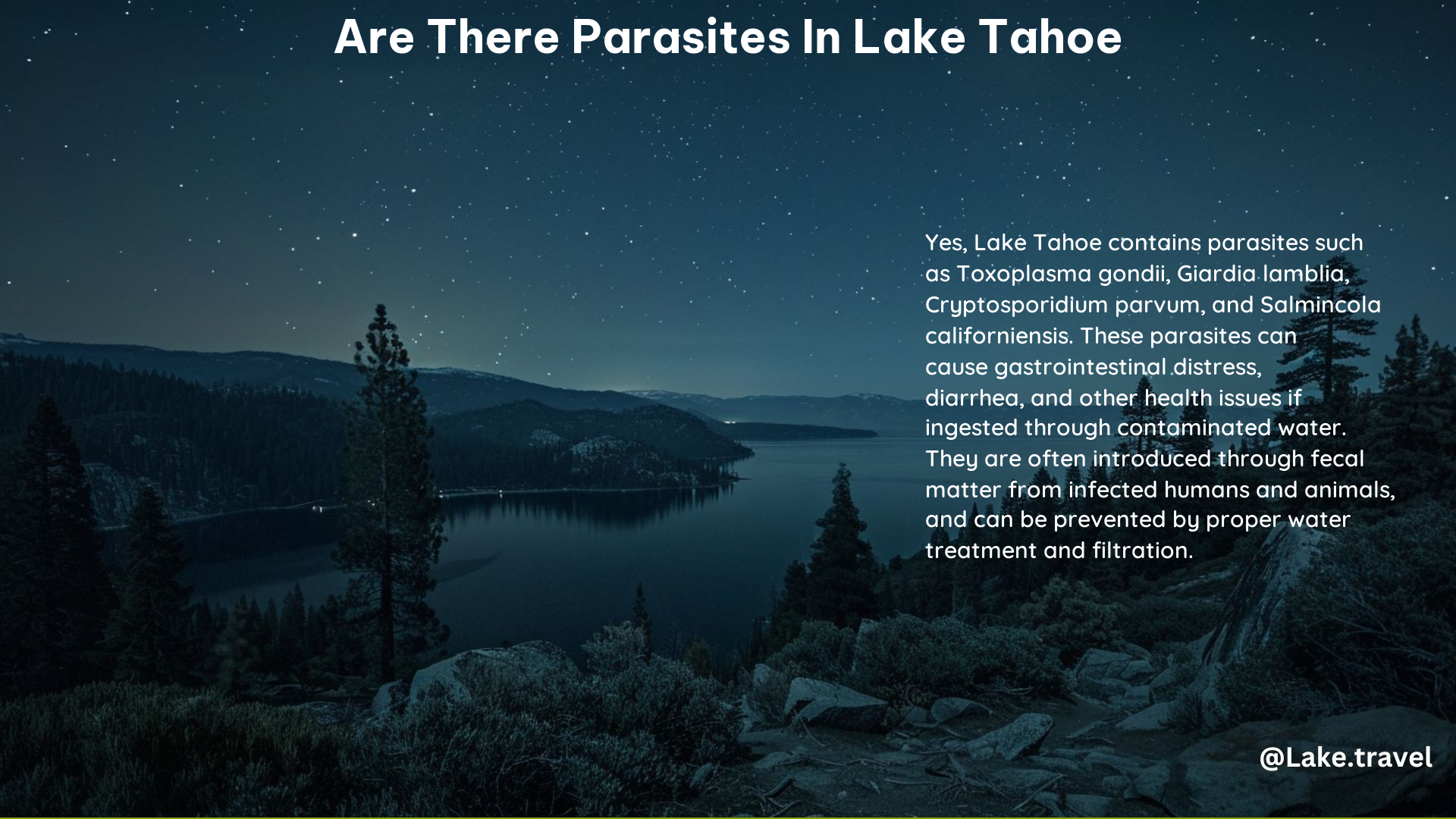Yes, there are parasites present in Lake Tahoe. The most common parasites found in the lake are Giardia lamblia and Cryptosporidium parvum. These parasites are microscopic, single-celled organisms that can cause gastrointestinal distress in humans and animals if ingested through contaminated water or contact with infected feces.
Types of Parasites in Lake Tahoe
Giardia lamblia
This parasite can cause symptoms such as diarrhea, abdominal cramps, weight loss, bloating, and vomiting. It can be treated with antibiotics.
Cryptosporidium parvum
This parasite can also cause gastrointestinal distress and can be fatal in people with compromised immune systems. There is no effective drug therapy for Cryptosporidium, and the body’s immune system must clear the infection.
Salmincola californiensis
This is a parasitic copepod that has been found in Lake Tahoe, particularly in rainbow trout. It can cause depression in the host tissue at the attachment site and can be introduced through stocked fish species.
Impact on Fish Population

The presence of parasites in Lake Tahoe can significantly affect the fish population. For example:
- Salmincola californiensis can parasitize lake trout and kokanee salmon, which are important recreational fisheries in Lake Tahoe.
- Giardia lamblia and Cryptosporidium parvum can be introduced through infected fish and can spread to other fish species, potentially affecting the overall health of the fish population.
Prevention and Management
To prevent the spread of parasites in Lake Tahoe:
- Water Treatment: Water suppliers treat the water with chlorination and ultraviolet radiation to kill bacteria and viruses.
- Fish Monitoring: Management agencies should monitor for parasites in fish before stocking them in the lake.
- Pet Waste Management: Dog owners should clean up pet waste and dispose of it properly to prevent the spread of parasites through feces.
- Water Purification: Hikers and campers should purify water taken from streams or lakes before drinking or cooking with it.
Conclusion
While the presence of parasites in Lake Tahoe is a concern, there are steps that can be taken to prevent and manage the spread of these organisms. By following best practices for water treatment, fish monitoring, pet waste management, and water purification, visitors to Lake Tahoe can enjoy the lake’s natural beauty while minimizing the risk of exposure to harmful parasites.
References
- USDA Forest Service. (n.d.). Outdoor Safety & Ethics. Retrieved from https://www.fs.usda.gov/detail/ltbmu/learning/safety-ethics/
- Tahoe Daily Tribune. (2003, December 7). Lake water almost good enough to drink. Retrieved from https://www.tahoedailytribune.com/news/lake-water-almost-good-enough-to-drink/
- Kamerath, M., Allen, B. C., & Chandra, S. (2009). First documentation of Salmincola californiensis in Lake Tahoe, CA–NV, USA. Western North American Naturalist, 69(2), 257–259. Retrieved from https://scholarsarchive.byu.edu/cgi/viewcontent.cgi?article=2206&context=wnan
- Sierra Club. (2022, May 20). ICYMI: Tahoe Trash, Sexy Parasites, EV Go Vroom & Too Many Deaths. Retrieved from https://www.sierraclub.org/sierra/icymi/icymi-tahoe-trash-sexy-parasites-ev-go-vroom-too-many-deaths
- University of Arizona. (2005). Lake Tahoe – Do Pet Recreation Areas Affect Water Quality? Retrieved from https://ag.arizona.edu/region9wq/pdf/factsht_SWWQ002.pdf
